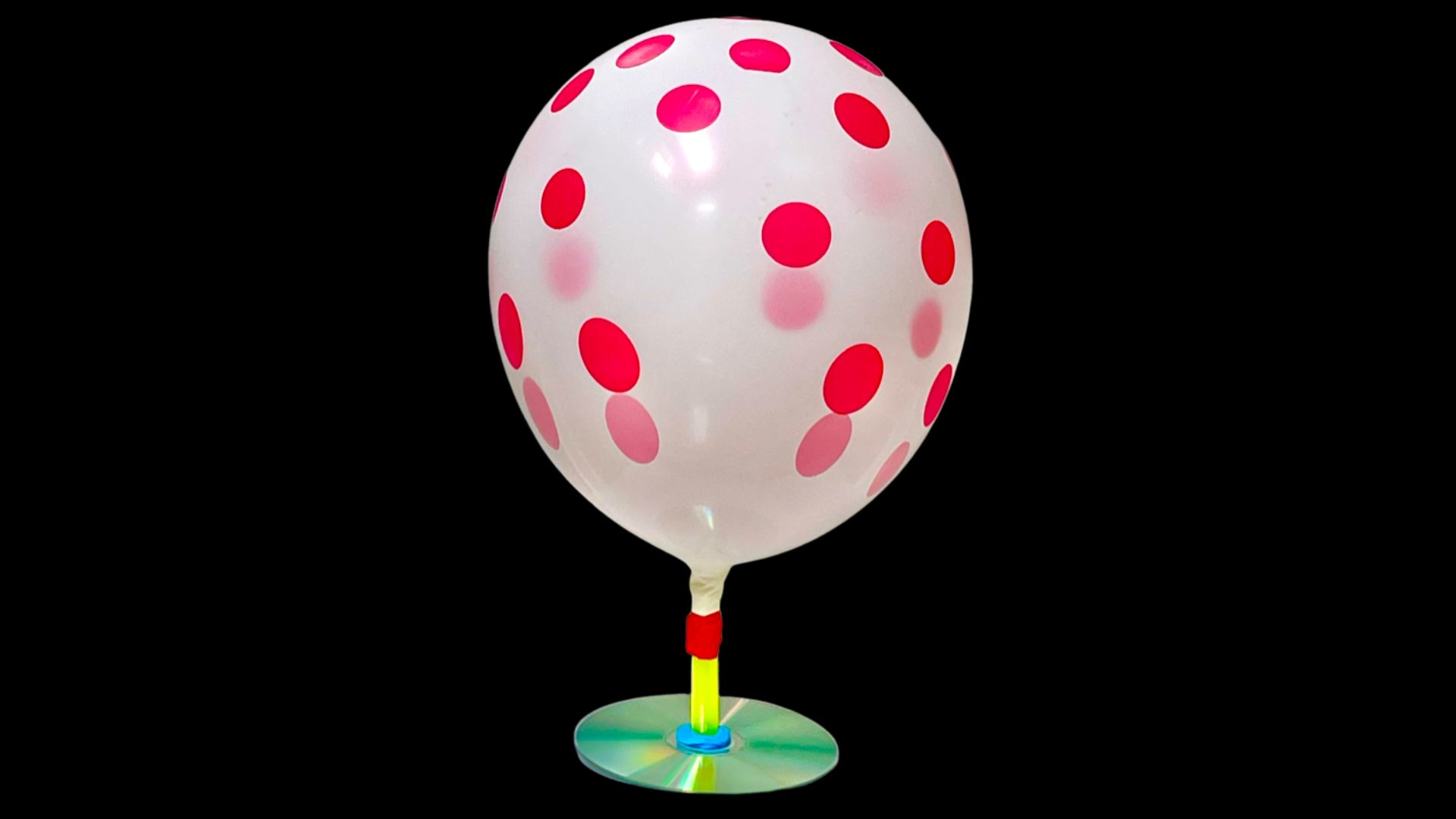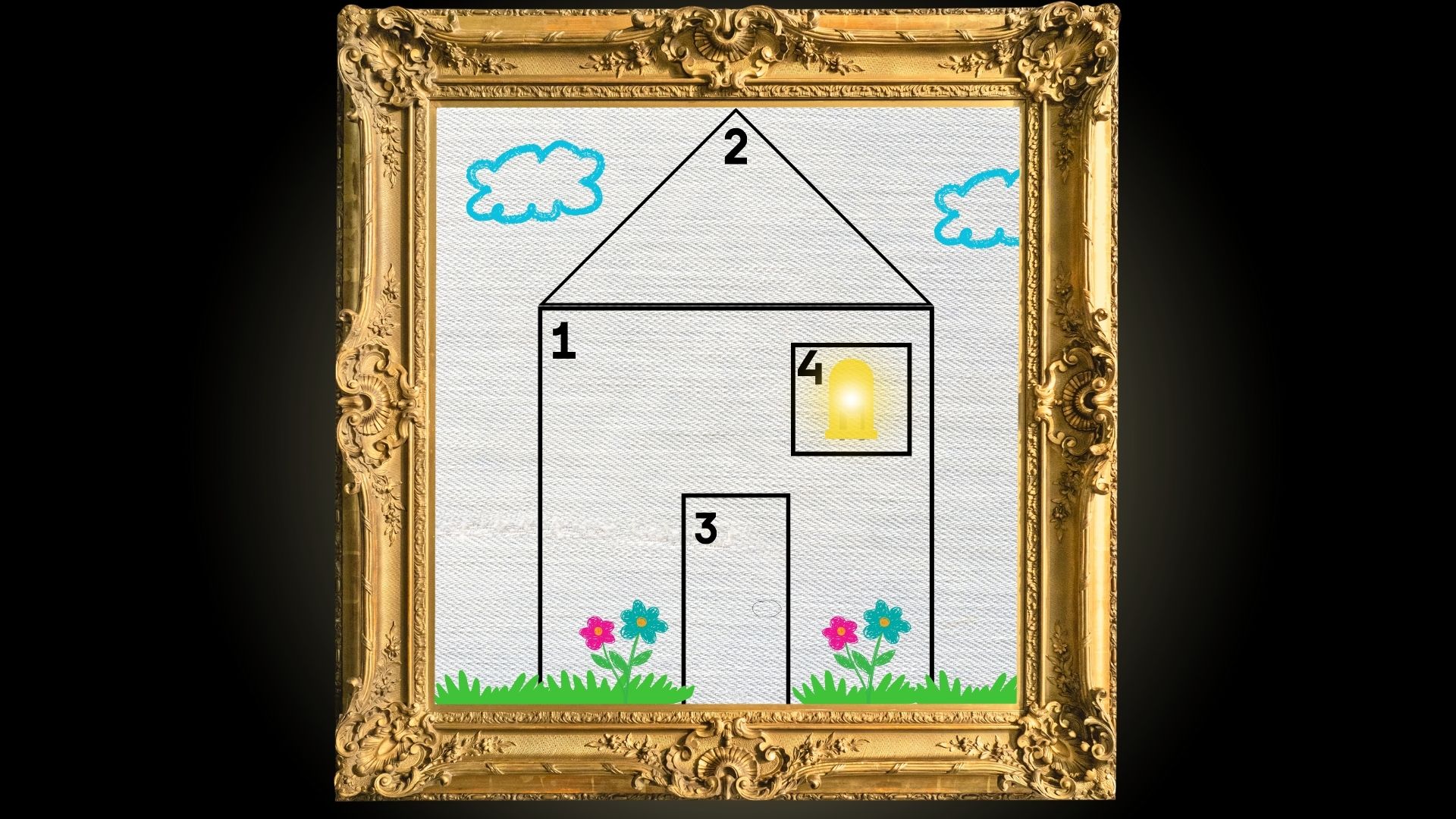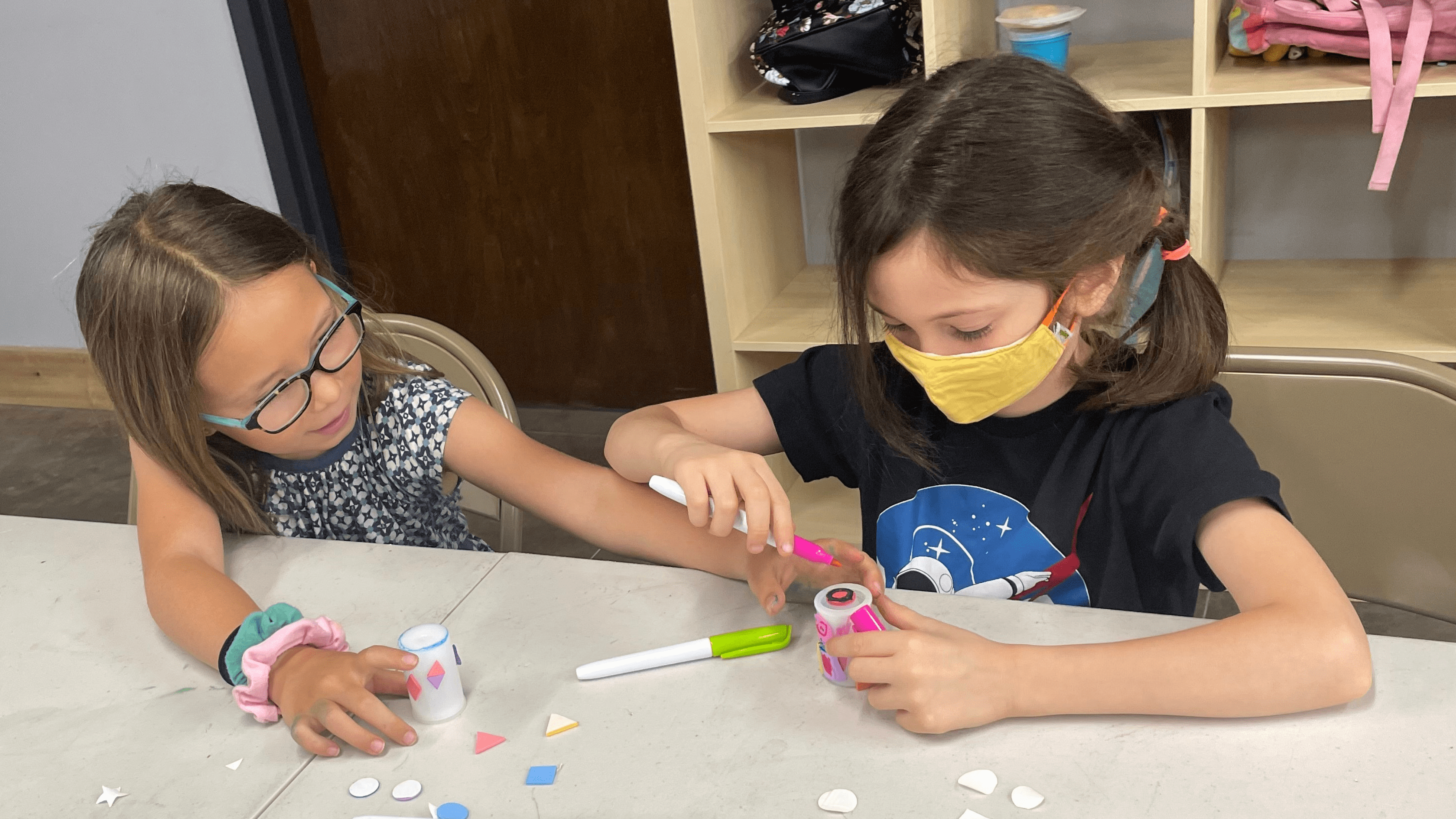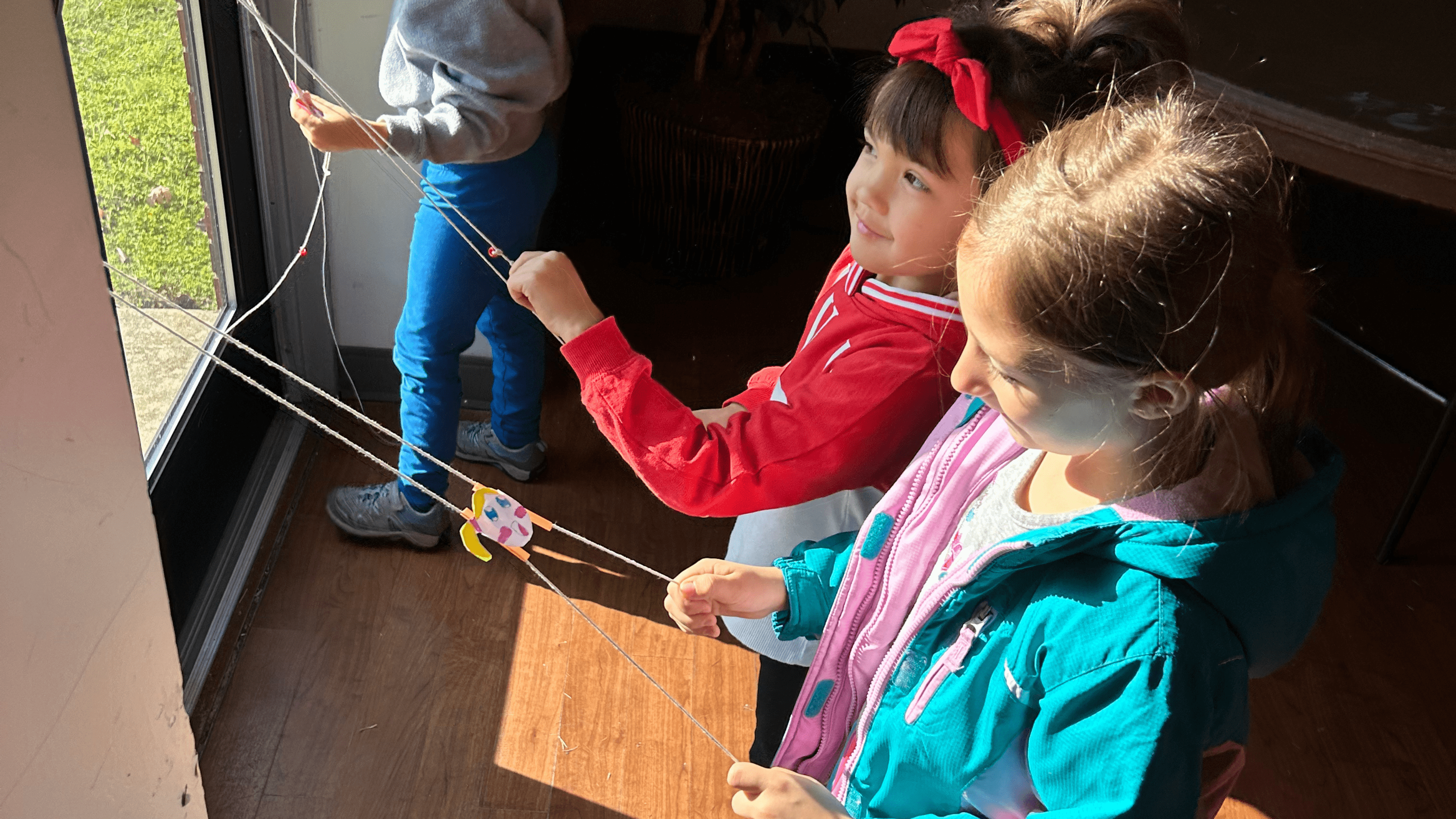In this project created by Hope, a member of the Rosie Innovators STEM program for young women in high school, you will make your very own “levitating” hovercraft! This hovercraft flies when air pressure in a balloon is released and produces a cushion of air for the hovercraft to float on.
A hovercraft is a vehicle that releases strong currents of air underneath it. When the air gets trapped under the hovercraft, it produces a cushion of air for the hovercraft to glide over. Based on Newton’s 3rd Law – Action and Reaction – when this air is pushed down from the hovercraft, it applies a force on the ground which then pushes the hovercraft up – an equal and opposite reaction. In other words, air down, craft up! The hovercraft’s air cushion reduces friction, or the resistance from 2 objects rubbing together, because the hovercraft doesn’t touch the surface. Instead, it flies above it, making the hovercraft amphibious, i.e., able to travel on/between land and water. It’s like a hybrid between a boat, plane, and helicopter!
Ready to make your hovercraft at home or in your classroom? Gather the materials listed at the right, and follow the instructions below! But be careful – this hovercraft might just blow your socks off!




